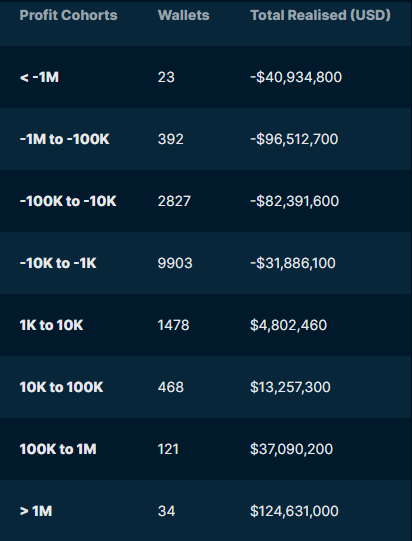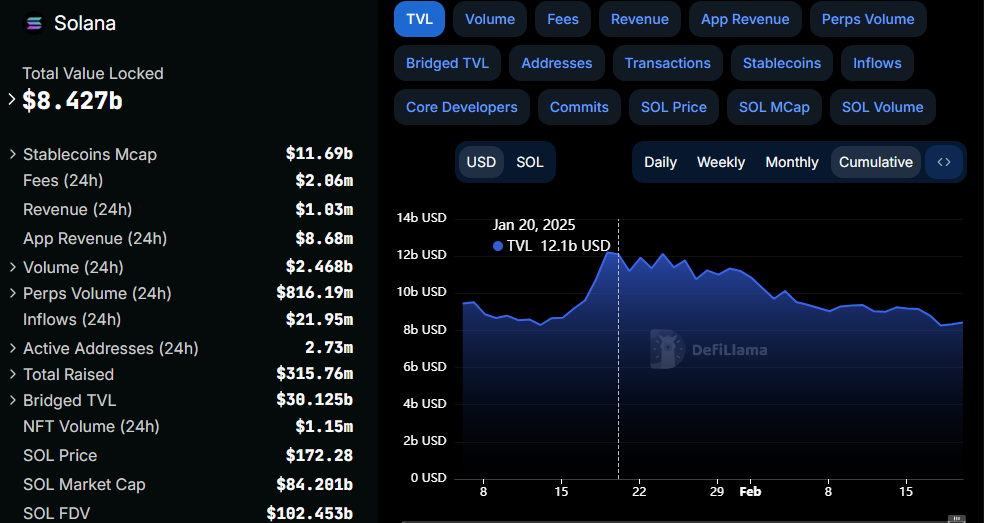-
In a significant turn of events, a recent report by Nansen reveals that 86% of LIBRA investors incurred losses totaling $251 million, with insiders and automated bots reaping $180 million in profits.
-
This stark disparity raises red flags about potential insider manipulation, especially given President Javier Milei’s deleted tweet that initially fueled LIBRA’s price surge.
-
Arkham’s investigation into Kelsier Ventures’ holdings links over $300 million in assets to the company, suggesting deeper connections to LIBRA’s controversial collapse.
The LIBRA token’s rapid rise and subsequent fall highlight the unsettling dynamics between retail investors and insiders, with significant losses and hidden profits at play.
Understanding the Dynamics of LIBRA’s Rise and Fall Amidst Investor Losses
The Nansen report intricately details the rapid ascent and crash of LIBRA, a Solana-based meme coin that saw its valuation skyrocket to $4.5 billion following a formal endorsement from Argentina’s President Javier Milei on February 14, 2025. This endorsement was perceived as a major catalyst for investment, particularly in the Argentine market, where the token was touted as a means to support local businesses.
However, the excitement was short-lived; the endorsement was retracted when President Milei deleted his supportive tweet, raising concerns about the legitimacy of the project’s initial promises. Hayden Davis, a key figure behind LIBRA, characterized it as merely a meme project, casting further doubt on its intended purpose and igniting theories of an insider cash grab.
Data from Nansen reveals a troubling narrative: while a few insiders profited substantially—one trader made an exit profit of $5.1 million within less than an hour—most investors struggled, as only 37 out of 57 early wallets managed to turn a profit, highlighting the skewed landscape of opportunity.
The Role of Trading Bots and Insider Strategy in LIBRA’s Market Behavior
Analysis from Nansen indicates a complex interplay of automated trading strategies and insider advantages that skewed profit distribution. It appears that many of the notable gains were attributable not to retail investors but rather to automated trading bots and insiders, often referred to as “sniping bots,” which took advantage of the initial market frenzy. This led to a troubling concentration of profit among a select few, while the majority of participants saw their investments dwindle.
Among the high-profile investors who suffered losses was Dave Portnoy, the founder of Barstool Sports, who reportedly lost $6.3 million but was later given a $5 million reimbursement. This selective return raised eyebrows and added to the controversy, prompting inquiries into whether there was a pattern of preferential treatment among certain traders.

Profit Distribution in LIBRA Meme Coin. Source: Nansen
Kelsier Ventures: Unveiling Connections and Holdings
Arkham’s recent findings revealed that Kelsier Ventures, helmed by Hayden Davis, controls a staggering $300 million in assets, which further complicates the narrative surrounding LIBRA’s collapse. The intelligence firm identified over 1,000 addresses linked to Kelsier Ventures, indicating an extensive network that appears intertwined with the meme coin’s market activity.
“We have identified over 1000 addresses belonging to Kelsier Ventures, a.k.a. Hayden Davis. Kelsier addresses that hold LIBRA-associated funds are tagged in our ‘Libra’ entity,” Arkham stated in its report, highlighting the extensive holdings within the venture backing.
The extracted liquidity from Kelsier’s LIBRA entity totals around $100 million in USDC and SOL, pointing to potential liquidity issues facing the Solana ecosystem itself. This outflow may reflect broader systemic risks and investor sentiment shifts towards more stable assets, particularly as DeFiLlama noted a significant decrease in Solana’s total liquidity from $12.1 billion to $8.42 billion.

Solana TVL Drop. Source: DefiLlama
Conclusion
In conclusion, the LIBRA incident underscores the volatile and often opaque nature of the crypto market. The ability of insiders to secure profits while the majority incur losses raises significant ethical and regulatory questions about market operations. As the landscape evolves, this situation stands as a cautionary tale for potential investors. The ongoing scrutiny from analysts and blockchain intelligence firms like Arkham may lead to greater transparency and accountability in the future of meme coin projects.
